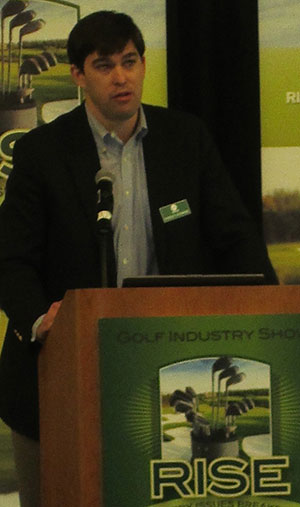RISE serves up the latest on the Endangered Species Act and its impact on you.
At the Responsible Industry for a Sound Environment (RISE) breakfast meeting at this year’s Golf Industry Show on Feb. 6 in San Diego, federal legislative and regulatory issues took the spotlight. In his introduction, Steve Gullickson, RISE governing board chairman, said in 2013 the organization is setting its sights most on California, Florida and Northeastern states such as New York, Massachusetts and New Hampshire.
“Those are key states where legislative and regulatory challenges are moving at a relatively fast pace,” he said.
They’re challenges he said could inhibit the entire Green Industry’s ability to deliver as broad a range of products as it does today (think: pesticides).
Conversation at the breakfast focused on a few issues, but most dominating was the Endangered Species Act. It’s at the center of multiple federal lawsuits that could curtail the Green Industry’s ability to apply pesticides on their current schedules, based on alleged risks to endangered species.
A northern California district court’s decision on the issue is looming. A ruling is expected this spring.
“It’s really a massive challenge for us in terms of everything—from crop all the way through golf and commercial and residential (landscaping),” Gullickson said.
RISE is striving to ensure lawsuits fighting the United States Environmental Protection Agency (EPA) on the issue aren’t successful. And by intervening in Center for Biological Diversity v. EPA, otherwise known as “the megasuit,” RISE is taking on a proactive role, one on the side of EPA.
The suit is called the megasuit “because about 380 registered pesticides (across the U.S.) potentially could be impacted under this litigation,” said Dudley Hoskins, manager of regulatory policy at RISE.

Depending on the suit’s outcome, provisions could delay new pesticides from coming to market or limit their use altogether, having a major impact on the Green Industry.
The nonprofit Center for Biological Diversity contends that EPA did not consult with the U.S. Fish and Wildlife Service properly about the effects of EPA-registered pesticides on some endangered species in the San Francisco Bay area.
But Karen Reardon, RISE’s vice president, public affairs, said there’s nothing wrong with EPA’s standards.
“EPA has the gold standard for risk assessment,” Reardon said. “They are very well resourced; they do a fine job in meeting their remit and risk assessment. We would like the services to be more open to the EPA and the great job they’re doing on this as being protective of species.”
But the U.S. Fish and Wildlife Service has its own species risk assessment process, which it’s confident in, Reardon said. As a result, she added, it simply doesn’t consider EPA’s perspective.
RISE’s hope is the consultation process among the federal services can be streamlined under the ESA and the Federal Insecticide, Fungicide and Rodenticide Act (FIFRA).
Regardless of the issues at stake, the conflict would be much better resolved through inter-agency partnership—not played out in the courts, said Hoskins.
Reardon said RISE intervened in the megasuit so if there is a settlement, the organization could give lawn care professionals a voice in any future discussions.
“Our goal would be to ensure there would be collaboration going forward and more perspectives involved in the decision making,” she said. “We would like the interests and perspectives of pesticide applicators and manufacturers to be represented at the table through us.”

